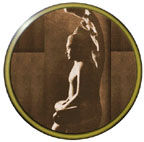

Imagery is a flow of thoughts that one can see, hear, feel, smell, or taste in one's imagination. Unlike visualization, which refers only to "seeing" something in the mind's eye, imagery means imagining through any sense - visual, aural, tactile, kinesthetic, olfactory and proprioceptive.
Guided Imagery uses mental images to promote physical healing or changes in attitudes or behavior. Practitioners may lead clients through specific visualization exercises or offer instruction in using imagery as a highly effective form of self care. Therapeutically, guided imagery is often used to alleviate stress, stimulate the immune system, and reduce pain.
![]() Return
to the menu page »
NIH Mind/Body
Return
to the menu page »
NIH Mind/Body
Imagery is one of the two "higher order" languages of the human nervous system; the other one is the more familiar faculty of "thinking in words." As a natural way the nervous system stores, accesses and processes information, imagery is a symbolic, highly personal and especially effective language for maintaining the dialogue between mind and body.
Imagery has three main characteristics that provide great value in medicine and healing:
Some imagery seems to arise from unconscious processes, body processes and memories and perceptions from the cerebral cortex or "higher" center of the brain. Others, having to do with smell, for instance, may rise from older, more primitive brain areas. Whatever its origin, imagery is thought to have its effect by sending messages from the higher centers of the brain through to the lower centers that regulate most of a person's physiologic functions, such as breathing, blood flow and pressure, heart rate, digestion, immunity, temperature, waking and sleeping rhythms, thirst, hunger and sexual function.
Recent research indicates that the same part of the brain (the optic cortex) that is activated when a person is seeing, is similarly activated when a pwerson uses imagery to visualize. In like fashion, when people imagine hearing something, the auditory cortex is active. Thus, it appears that the cortex can create these imaginary realities and, clacking conflicting messages, the lower centers of the nervous system respond to this information.
Imagery tends to reveal the "big picture" and helps us recognize how things are unexpectedly related. Becoming aware of these relationships may support a positive, constructive attitudinal shift or behavioral change that can aid in relieving, changing or coping with illness or symptoms.
Many physical ailments are direct manifestations of emotions that are locked within the unconscious. Through imagery participants can access those emotions and consciously change their effect on personal health.
By directly accessing emotions, imagery aids participants in understanding the needs that may be represented by an illness and can help develop a way to meet those needs. Additionally, imagery is one of the most direct ways of becoming aware of emotions and their effects on health, both positive and negative.
Guided imagery assists people in relaxing and listening to their bodies to create a dialogue that reconnects body, mind and spirit in a powerful, holistic way. Many directions may be taken in guided imagery, but all include techniques that produce a state of relaxation. The participant may be asked to be aware of their breath and to let go of physical tensions in a progressive manner. They then may be asked to seek out a familiar and safe place, or a place that gives them a sense of expansiveness. This setting may be a meadow, a beach or a mountain (according to the nature and experience of the participant) and provides a sense of protectedness. The technique enables the participant to experience their being in a different way, while providing the opportunity to develop stress-management skills.
Another technique consists of general relaxation imagery and focusing on the area that is causing a problem or pain. By focusing on the problem or pain, the participant can then describe the pain to the counselor and try to associate the pain with a specific image.
The third guided imagery technique includes general relaxation imagery and then having the participant imagine a wise person or inner-guide that would help them through their healing or pain reduction. The participant would ask the inner guide questions to gain insight into their pain and healing.
Thus, guided imagery empowers the participant to actively engage in their healing process and to cope with stress and pain in a new way.
Beyond relaxation, which is fundamental to self-healing, imagery is a way of treating people rather than symptoms or diseases. It is a proven method for pain relief, for helping people tolerate medical procedures and treatments and reducing side effects, and for stimulating haling responses in the body. Imagery can assist in clarifying attitudes, emotions, behaviors and lifestyle patterns that may be involved in producing illness. Additionally, it can facilitate recovery by helping individuals develop the insight and self-awareness to cope positively and constructively with their health concerns.
Relief of Chronic Pain:
Accelerate healing and minimize discomfort from acute injuries:
From the symptoms of:
Because imagery can affect immune system functioning it is also being used for a broad spectrum of autoimmune disorders, including:
A great number of people with cancer have utilized guided imagery as a part of their recovery process.